Fatty Crab Goes to St. John

In this article:
I was officially on a work trip, but most of my duties seemed to consist of lying on the beach, cooking epic dinners and drinking mango-and-tequila cocktails. It was the winter of 2010 and my fiancée, Jori Jayne Emde, and I were visiting St. John in the US Virgin Islands to determine if it could support a branch of Fatty Crab, the Malaysian-inspired restaurant my business partner Rick Camac and I founded in 2005 in New York City.
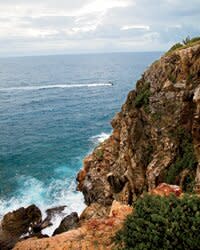
Off the coast of St. John. Photo © Cedric Angeles.
I had no reason to think it could. Only 4,100 people live on St. John year-round, a number that triples during high season. Because the US National Parks Service controls about 60 percent of the land, St. John is one of the least developed islands in the Caribbean—there's no golf course or even an airport. (Visitors take the lumbering ferry from St. Thomas.)
Still, I had an investor urging me along: Michael Skurnik, a New York wine importer who has a vacation home on St. John. He was eager to partner on a Fatty restaurant, island-style. So Rick, Jori Jayne and I flew down to visit him. As we hopped from beach to beach, we kept repeating to ourselves, "There's no way this island could support a Fatty Crab." Drinking wine "spritzahs" (as Michael calls them) on his deck: "There's no way this island could support a Fatty Crab."
About a year later, we opened a Fatty Crab on St. John.
Most chefs who launch offshoots of their US restaurants in the Caribbean do so at the big resorts. But I wanted Fatty Crab St. John to have the same scrappy, independent vibe as the rest of my NYC Fatty Crew (now up to two Fatty Crabs, two Fatty 'Cues and a few outdoor kiosks). That meant local ingredients, plenty of spicy flavors, high-acid wines and rock and roll played just a little bit too loud.
With Michael on board, I knew the wines would be first-rate. The first thing he did when we started planning the restaurant was send an entire shipping container of bottles to St. Thomas; they sit in a climate-controlled warehouse there until we need them (a staffer has to bring the cases over on the ferry). Thanks to him, our wine list is full of finds—Rieslings from Germany, Grüner Veltliners from Austria and grower Champagnes.
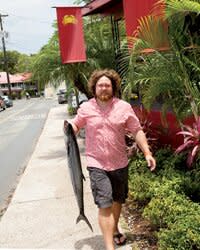
Zak Pelaccio makes a special delivery. Photo © Cedric Angeles.
I was determined to use local ingredients on the menu, but finding meat on the island turned out to be a challenge. So we adapted to be more Caribbean, emphasizing seafood and vegetables. Our best purveyor also happens to be Michael's landscaper—Josephine Roller, a Borneo-born woman who has run an organic farm on the island for more than 20 years. Conveniently for me, she grows all kinds of Asian produce—long beans, a variety of chiles, Japanese eggplant, calamansi limes. She's a character: funny, dynamic and kind of domineering. I asked her to try growing mangosteens, and she said, "I tried that 20 years ago. It doesn't work." End of discussion.
St. John is such a small island that once people heard about us, they started showing up at the back door with bags of mangos, papayas, tomatoes, limes and stalks of lemongrass, which grows wild on the hillsides. One of the dishwashers has a fishing boat and brings whatever he catches; we used some whelks (sea snails) in a pappardelle with turmeric and habanero peppers. When we don't have whelks, we substitute clams; the complex flavor of turmeric partners with any kind of shellfish.
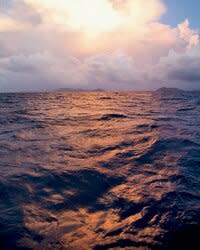
Fatty Crab St. John features locally caught seafood. Photo © Cedric Angeles.
One of the carpenters who helped build the restaurant taught our general manager, David Segarra, how to go "bugging," Caribbean slang for free-diving for spiny lobsters with nothing more than a homemade snare and some snorkeling gear. I've never successfully dived for lobster—you've got to go 15 feet down and chase the little creatures into crevices, all while holding your breath. But when Dave and his friends catch a few, the Fatty Crab cooks make a butter-poached lobster with a mildly spicy kimchi butter sauce—delicious with a supercrisp Vermentino from Tuscan producer Terenzuola.
To ensure a steady source of top seafood, we made connections with a local fishing charter, Double Header; they agreed to sell us whatever is leftover from their tourist trips (recreational fishermen have to pay a fee to take home more than 20 pounds of catch, so there's always extra fish after a trip). The relationship proved handy recently, when my friends and I hired Double Header to take us on a fishing expedition for fun; the idea was to see what we could reel in for a cookout.
Captain Chris headed out 20 miles from the coast, where the water is several hundred feet deep. Jori Jayne brought along the ingredients for cocktails: tequila, sweet-tart juice from underripe mangos, lemongrass, Thai basil, cane sugar and lime juice. As the waves jerked the boat up and down, it became clear that only a dedicated crew mixes cocktails on a deep-sea fishing trip.
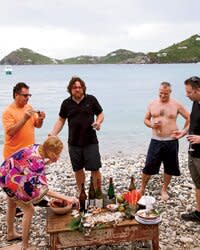
Barbecue on Ditleff Beach with the Fatty Crab team. Photo © Cedric Angeles.
Later that day, back on dry land, we set up for a barbecue on Ditleff Beach, a perfect crescent just a short walk from Michael's house. With our haul from the trip, it seemed like a good time to try out some new recipes for the restaurant. I set up my cutting board on some boulders, chopping ginger and chiles, then mixing them with lime juice to make a sauce for the fish. I brought along some of our new lime charcoal, which we make by roasting spent citrus halves in the oven until they are completely blackened. I wrapped banana leaves from one of Josephine's trees around a nice hunk of kingfish, then threw it directly onto the lime-charcoal fire. We ate the tender kingfish, dipping it in the lime-chile-ginger sauce, and passed around a bottle of a juicy Spanish rosé. St. John, I thought, is a perfect place for a restaurant.
Fatty Crab St. John’s Favorite Wines for Seafood
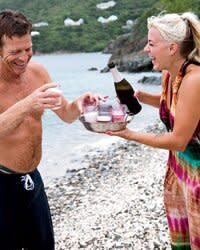
Michael Skurnik and Jori Jayne Emde. Photo © Cedric Angeles.
Wine importer Michael Skurnik (left), a Fatty Crab St. John investor, brings in the bottles here. All pair nicely with seafood.
NV Domaine Robert Sérol Turbullent Rosé ($24) Sérol's frothy, delicately sweet sparkling rosé is made from Gamay grapes in France's Loire Valley.
2010 Nigl Freiheit Grüner Veltliner ($22) Winemaker Martin Nigl is one of Austria's top Grüner producers. This single-vineyard bottling is fragrant and zippy.
2010 Terenzuola Colli di Luni Vermentino ($18) Italy's coastal Liguria region produces stunning white wines like this herbal, minerally Vermentino.
2010 Cune Rioja Rosado ($14) From one of Rioja's oldest wineries, founded in 1879, this hot pink, Tempranillo-based rosé is fresh and juicy.
2010 The Pinot Project Pinot Noir ($14) Skurnik created this new red cherry–scented wine as a way to offer delicious California Pinot Noir at a good price.
—Megan Krigbaum

Seafood Recipes from Top Chefs
More Delicious Recipes:
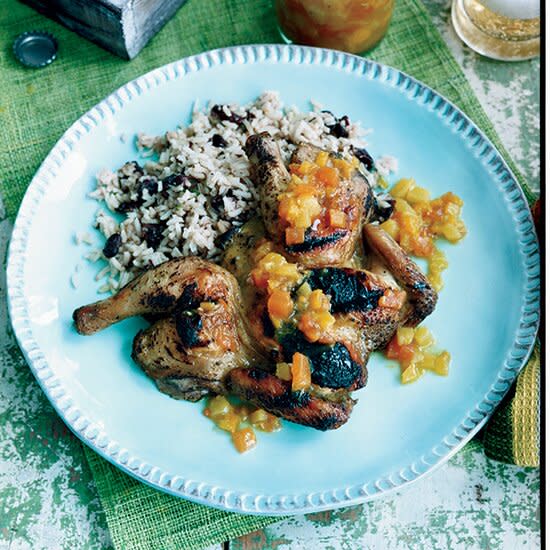
© John Kernick
Caribbean Cuisine
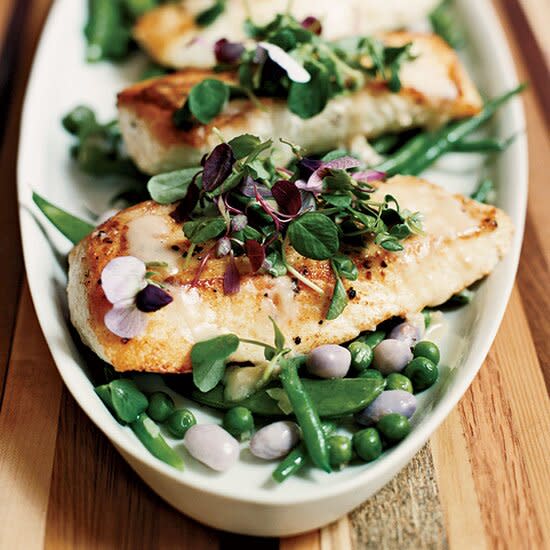
Recipes for Sustainable Seafood
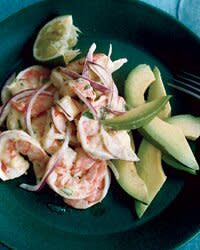
© John Kernick
Tropical Island Dishes

